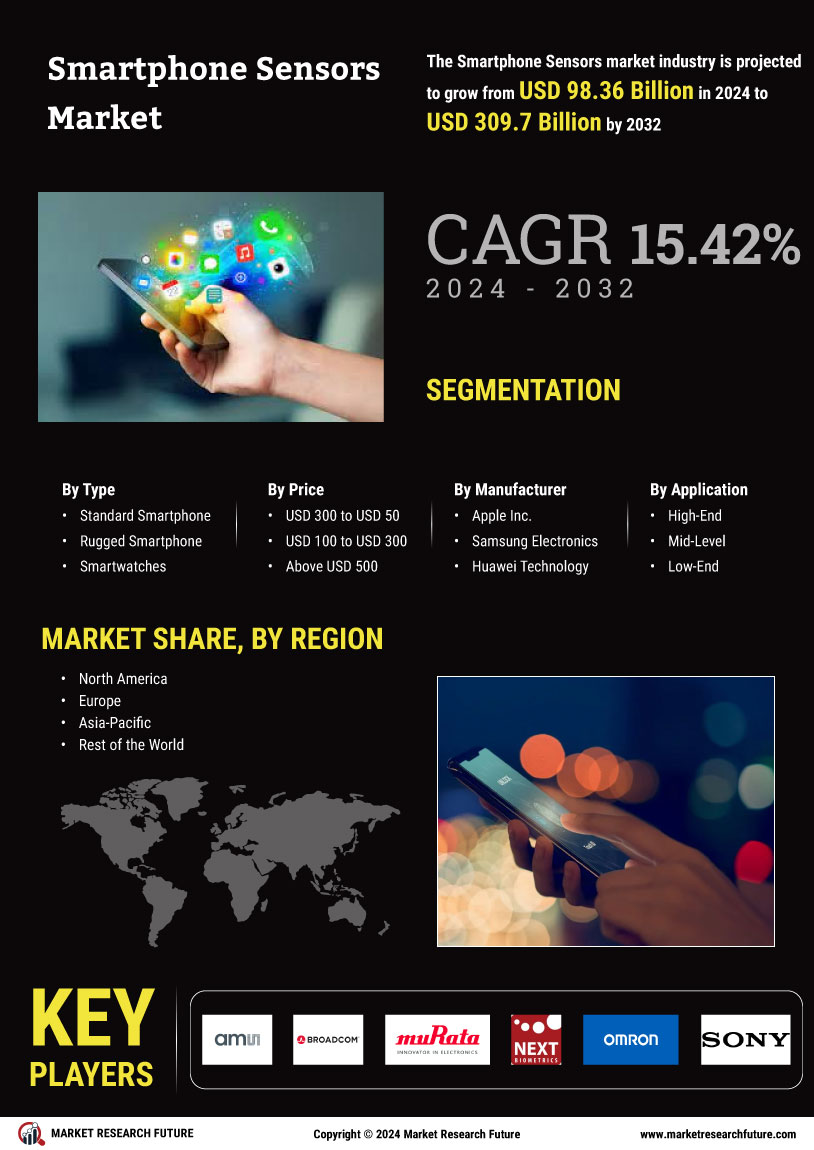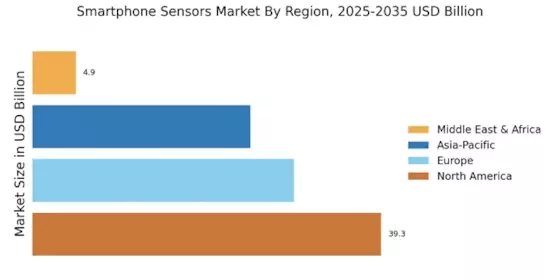The Smartphone Sensors Market is currently characterized by a dynamic competitive landscape, driven by rapid technological advancements and increasing consumer demand for enhanced functionalities in mobile devices. Key players such as Bosch (DE), STMicroelectronics (FR), and Qualcomm (US) are strategically positioned to leverage their expertise in sensor technology, focusing on innovation and partnerships to maintain competitive advantages. Bosch (DE) emphasizes its commitment to developing advanced MEMS sensors, which are integral to various applications, including automotive and consumer electronics. Meanwhile, STMicroelectronics (FR) is enhancing its portfolio through strategic collaborations, particularly in the realm of IoT and smart devices, thereby broadening its market reach. Qualcomm (US) continues to invest heavily in R&D, particularly in AI-driven sensor technologies, which positions it favorably in the evolving landscape of smartphone capabilities.
The competitive structure of the Smartphone Sensors Market appears moderately fragmented, with several players vying for market share. Companies are increasingly localizing manufacturing and optimizing supply chains to enhance efficiency and reduce costs. This trend is particularly evident as firms seek to mitigate risks associated with global supply chain disruptions. The collective influence of key players, including Texas Instruments (US) and NXP Semiconductors (NL), further shapes the market dynamics, as they engage in strategic maneuvers to solidify their positions.
In August 2025, Bosch (DE) announced the launch of its latest MEMS sensor technology, which is designed to improve the accuracy of motion detection in smartphones. This innovation is expected to enhance user experience significantly, particularly in gaming and augmented reality applications. The strategic importance of this launch lies in Bosch's ability to cater to the growing demand for high-performance sensors, thereby reinforcing its market leadership.
In September 2025, STMicroelectronics (FR) entered a partnership with a leading smartphone manufacturer to integrate its advanced environmental sensors into upcoming devices. This collaboration is pivotal as it not only expands STMicroelectronics' market presence but also aligns with the increasing consumer focus on sustainability and energy efficiency. By embedding these sensors, the company aims to enhance the functionality of smartphones while addressing environmental concerns.
In October 2025, Qualcomm (US) unveiled a new AI-driven sensor platform aimed at improving smartphone camera capabilities. This platform is expected to revolutionize mobile photography by enabling real-time image processing and enhanced low-light performance. The strategic significance of this development lies in Qualcomm's commitment to innovation, which is likely to set new benchmarks in smartphone technology and attract a broader consumer base.
As of October 2025, the competitive trends in the Smartphone Sensors Market are increasingly defined by digitalization, sustainability, and the integration of AI technologies. Strategic alliances among key players are shaping the landscape, fostering innovation and enhancing product offerings. Looking ahead, it is anticipated that competitive differentiation will evolve, with a pronounced shift from price-based competition to a focus on technological innovation, reliability in supply chains, and the ability to meet consumer demands for advanced functionalities.
















Leave a Comment